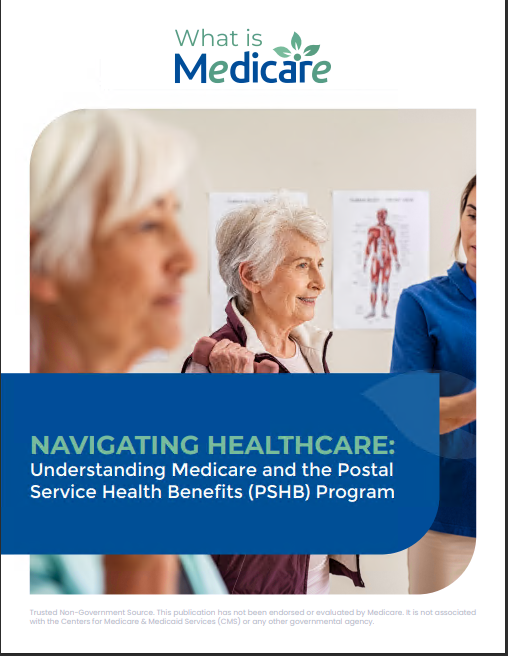Key Takeaways
-
Medicare is a critical resource for millions of Americans, but it can feel overwhelming at first glance. Breaking it into smaller, digestible sections helps you better understand and navigate your options.
-
Familiarizing yourself with enrollment periods, costs, and available coverage types ensures you make informed decisions that suit your health needs and financial situation.
Why Understanding Medicare Matters
Medicare plays a vital role in healthcare for people aged 65 and older, as well as some younger individuals with disabilities or specific medical conditions. However, trying to decipher terms like Parts A, B, C, and D, alongside enrollment deadlines and costs, can feel like learning a new language. The good news? You don’t have to tackle everything at once. Breaking it down into manageable pieces makes Medicare less intimidating and more accessible.
Medicare’s Four Parts: A Simple Breakdown
Understanding Medicare begins with grasping its four parts, each covering specific healthcare needs.
Part A: Hospital Insurance
Part A covers inpatient hospital stays, skilled nursing facility care, hospice, and some home healthcare services. For most people, this coverage is premium-free if you’ve worked and paid Medicare taxes for at least 10 years (40 quarters). However, if you haven’t, you’ll pay a monthly premium.
-
Key Costs: In 2025, the hospital deductible is $1,676 per benefit period. Coinsurance applies for longer stays, with daily rates increasing after 60 days of inpatient care.
Part B: Medical Insurance
Part B handles outpatient services like doctor visits, preventive care, lab tests, and durable medical equipment. It has a standard monthly premium, which in 2025 is $185, and an annual deductible of $257.
-
After Meeting the Deductible: Medicare generally covers 80% of approved costs, leaving you responsible for the remaining 20%.
Part C: Medicare Advantage
Part C plans are offered by private insurance companies and bundle Part A, Part B, and often Part D into a single plan. These plans may also include extra benefits, such as dental, vision, or hearing. Costs and coverage vary widely, so understanding your specific needs is crucial.
Part D: Prescription Drug Coverage
Part D helps cover the cost of prescription drugs. In 2025, there’s a $2,000 cap on out-of-pocket prescription expenses, providing significant relief for those who rely on medications.
Enrollment Periods: Don’t Miss Your Window
Missing the right enrollment period can lead to penalties or gaps in coverage. Here’s what you need to know:
Initial Enrollment Period (IEP)
The IEP surrounds your 65th birthday, lasting seven months: three months before, the month of, and three months after your birthday month. This is your first chance to sign up for Medicare.
General Enrollment Period (GEP)
If you miss your IEP, you can sign up during the GEP from January 1 to March 31 each year. However, coverage begins July 1, and you may face late penalties.
Special Enrollment Periods (SEPs)
SEPs are triggered by qualifying life events, such as losing employer-sponsored coverage or moving to a new service area. SEPs allow you to make changes outside standard enrollment periods without penalties.
Annual Enrollment Period (AEP)
The AEP, from October 15 to December 7, lets you join, switch, or drop plans, with changes taking effect January 1. Reviewing your coverage during this time ensures it aligns with your evolving needs.
Costs to Consider
Medicare is not free, even with premium-free Part A. Understanding costs helps you budget effectively.
Premiums
Part A premiums apply only if you haven’t met the 40-quarter work requirement. Part B premiums are income-based, with higher earners paying more through the Income-Related Monthly Adjustment Amount (IRMAA).
Deductibles and Coinsurance
-
Part A: $1,676 per benefit period.
-
Part B: $257 annual deductible, after which you’ll pay 20% of approved costs.
Additional Costs
Medicare Advantage and Part D plans have varying premiums, deductibles, and copayments, so carefully review plan details to avoid unexpected expenses.
How to Coordinate Medicare with Other Coverage
Many beneficiaries have additional coverage through employer-sponsored plans, Medicaid, or retiree benefits. Coordinating these with Medicare ensures comprehensive coverage without unnecessary duplication.
-
Employer Coverage: If you’re still working at 65 and have employer insurance, you can delay Part B without penalties, provided the employer’s plan qualifies as creditable coverage.
-
Medicaid: Dual eligibility for Medicare and Medicaid can cover many out-of-pocket costs, including premiums and copayments.
Simplifying Medicare Decisions
Choosing Medicare coverage doesn’t have to be daunting. These steps can simplify your decisions:
-
Assess Your Needs: Consider your current health, preferred providers, and financial situation.
-
Understand Plan Networks: Original Medicare offers nationwide coverage, while Medicare Advantage plans may have specific networks.
-
Compare Costs: Use tools like the Medicare Plan Finder to evaluate premiums, deductibles, and out-of-pocket maximums.
-
Check Drug Coverage: Ensure Part D or Medicare Advantage plans cover your prescriptions.
Preventing Late Enrollment Penalties
Avoiding penalties saves money and stress. For example:
-
Part B: A 10% penalty applies for each 12-month period you could have enrolled but didn’t.
-
Part D: A late enrollment penalty adds 1% of the national base premium for every month you delayed enrollment.
Maximizing Preventive Services
Medicare covers a wide range of preventive services at no additional cost, such as:
-
Annual wellness visits
-
Screenings for cancer, diabetes, and heart disease
-
Vaccinations like flu shots and COVID-19 boosters
Staying on top of preventive care keeps you healthier and avoids higher medical costs down the road.
Medicare’s Role in Long-Term Care
Medicare provides limited long-term care benefits, covering short-term stays in skilled nursing facilities after a qualifying hospital stay. However, it does not cover custodial care, such as assistance with daily activities. For broader coverage, you may need Medicaid or private long-term care insurance.
Tips for Navigating Medicare Resources
Medicare offers several tools and resources to help you:
-
Medicare.gov: Official website with plan finders and comparison tools.
-
State Health Insurance Assistance Programs (SHIPs): Free, personalized counseling.
-
Customer Service: Reach out to Medicare representatives for direct assistance.
Reviewing and Adjusting Your Coverage
Your healthcare needs may change yearly, so regularly reviewing your coverage ensures it remains suitable.
-
Annual Notice of Change (ANOC): Sent every September, detailing any changes to your plan’s costs or coverage.
-
Life Events: Changes like retirement, relocation, or new health conditions might require adjustments.
Don’t Be Intimidated: You’ve Got This
Understanding Medicare is easier when you break it into smaller steps. Focus on the basics, keep an eye on deadlines, and use available resources to make informed decisions. Remember, Medicare is designed to support you, not confuse you. Start small, ask questions, and take it one decision at a time.









